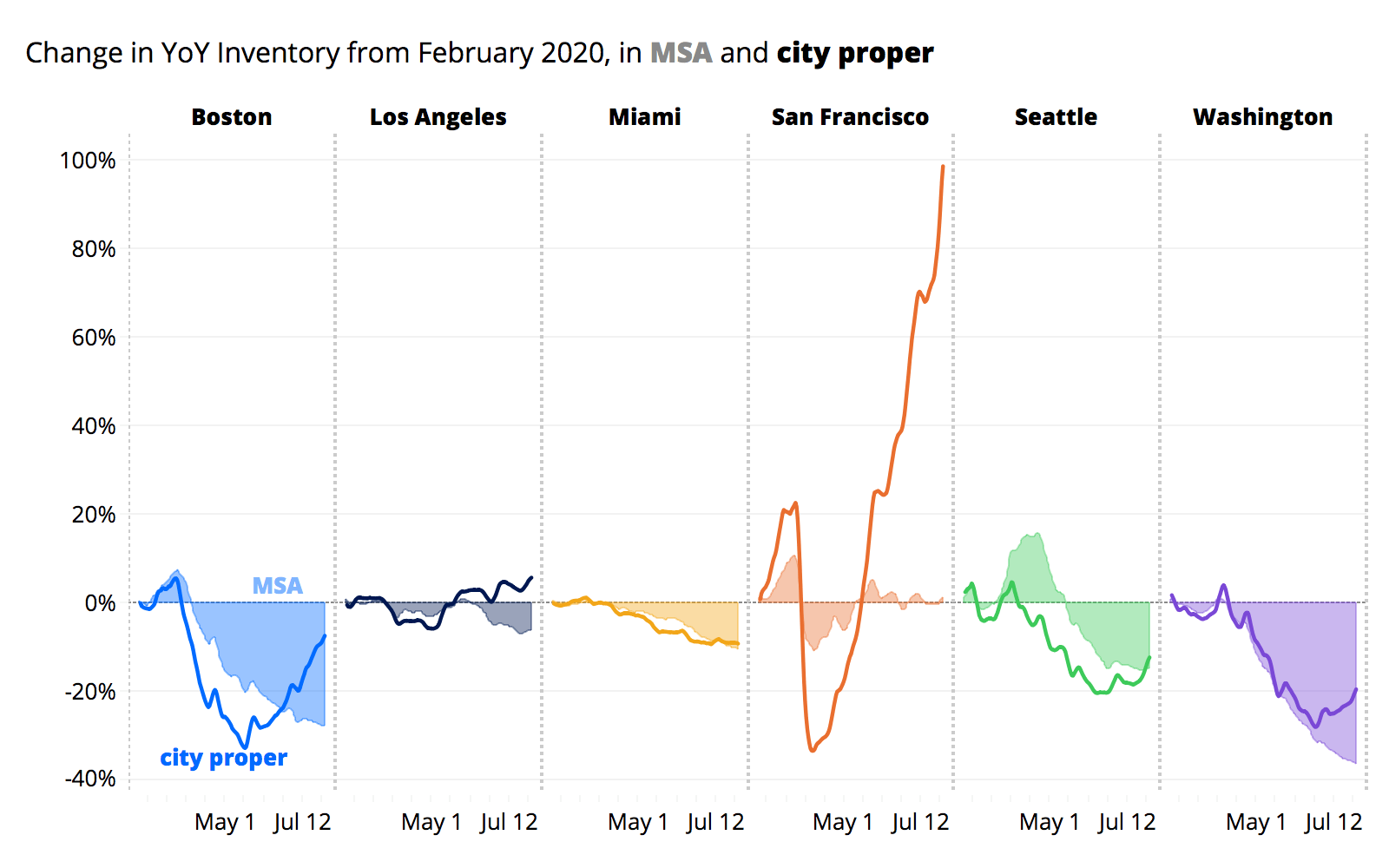Virtual First Is the Future of Work at Heap
This month we announced that Heap will be moving to a Virtual-First work model. This means virtual work will be the primary experience for all of our Heaple.
While virtual is primary, we highly value physical collaboration too. We will have space available in New York City, San Francisco, and London once it is safe to work together in person again. While we work virtually through the pandemic, we will continue to gather internal feedback and learn from others as we evolve our plans and policies.
This blog series will be a place where we document our efforts and share them with the community.
How we got here
In March 2020, like most companies, Heap swiftly moved to a remote model. As our Heaple transitioned from working in our SF, NYC, and London offices to working at home, we acknowledged the importance of having a great home office setup, so we offered a $1,000 Home Office Stipend for all Heaple.
Fortunately, we already had almost 50% of our engineering workforce working remotely, so we were prepared for this shift and had internal experts to learn from.
As we started making plans for the future, we evaluated our options. We ran internal focus groups and sent out a company-wide survey, which helped us to understand the appetite for a Virtual-First work setup. We also consulted leaders from other companies to learn best practices on running great Virtual-First companies.
While some people will unambiguously tout remote as the future, we wanted to be mindful about its upsides, downsides, and what it would take to succeed at Heap. This is a big decision, and we didn’t want to take it lightly. At the same time, we want to acknowledge that we won’t get all the details right, which is why we lean heavily on Heaple feedback.
Heaple feedback turns good people programs into great people programs. As we learn more, we will adjust and adapt — we expect our Virtual-First plans to change over time.
The upsides and downsides of going Virtual First
In general, we believe there are more upsides with going Virtual First, and we’re excited about the future. We also believe it’s important to be upfront about the downsides and mitigate them in our overall work strategy.
Upsides
Access the best talent. Going Virtual First allows us to tap into a much, much deeper global talent pool. (Our opportunities for finding amazing new Heaple have just grown by orders of magnitude!)
Foster the future of work. We’re making a bet that software can drive better collaboration than offices especially with all the recent activity around improving remote collaboration tools.
Promote work/life flexibility. We believe Virtual First can give our people more personal freedom, and ultimately a better quality of life.
Downside
Collaboration and team-building.It is more challenging to create this experience virtually.
#1 Upside: Access the best talent
Since Day 1, we’ve believed hiring is the most important class of decision we make at Heap. Virtual First allows us to:
Tap into a 100x bigger talent pool. We don’t believe all the best people live in SF/NYC/London. Hiring from a more global workforce lets us build a more diverse team, much more quickly.
Ensure we retain people through life changes. We shouldn’t have to lose people if their life requires them (or their partner) to move. The flexibility of Virtual First allows us to have a more agile workforce.
We are all seeing many companies starting to offer more permanent work-from-home policies. Others are going Virtual First like us. This latter group includes Twitter, Square, Dropbox, Shopify, Quora, Coinbase, and Affirm.
Across the tech world, we’re starting to witness the following cycle, which we think will provide us an opportunity to hire the best talent:
As more companies offer permanent work-from-home policies, tech companies are becoming more comfortable with hiring employees from outside the SF/NYC metro area.
Therefore, tech employees have less incentive to live in SF/NYC, especially considering the high cost of living in those areas.
This means tech companies have less local talent to pull from, and there is no longer a business advantage to hiring local talent. This further encourages companies to hire remote employees, and as a bonus can often save money by not having to rent high-cost office space.
The chart below suggests that our primary hub — San Francisco — is becoming less and less desirable for our workforce, which means there are less relative benefits to maintaining our HQ there, and we believe this will persist beyond COVID.

Of course, we don’t fully know what the hiring landscape will look like post-COVID. Companies may realize that Virtual First doesn’t actually work that well, and so there could be a movement away from this model. We do not think this will happen.
#2 Upside: Foster the future of work
From a first principles basis, we believe software is a better foundation for collaboration than offices. With Virtual-First and remote software, we can drive transparency and inclusivity by using tools that enable us to work more efficiently together. We are excited to see what the market produces.
Basically, we recognize there are ways in which our culture needs to evolve for Virtual First, and below are some of those ways.

#3 Upside: Promote work/life flexibility
We believe the best work happens when people can be their best selves. Though we’ve all struggled adjusting to life in quarantine through this pandemic, we believe a Virtual-First environment can increase our team’s quality of life by enabling greater work/life flexibility. We’ve also learned that we have to be very intentional about maintaining this flexibility — without being intentional, it’s easy for this opportunity to flip into a downside.
Avoid commute. “Holding all else equal, commuters have lower life satisfaction, a lower sense that their daily activities are worthwhile, lower levels of happiness and higher anxiety on average than noncommuters.” (Commuting and Personal Well-Being report)
Carve out time for your life. Make it easier to find time/space for your physical/mental health, your family, and your errands. The easier it is to invest in yourself, the easier it is to find fulfillment (both in/out of work).
But there is a challenge: Ensuring work/life boundaries (check out this recent cover of The New Yorker). Are you able to relate? We sure can.
Based on what we have learned from Virtual-First companies, one of the biggest sources of dissatisfaction is when people lack good home office setups. When we lack a good home office setup, it can be a lot harder to maintain work/life separation (we end up working where we usually eat, relax, and sleep). To mitigate these problems, we offer a $1k Home Office Stipend for all of our Heaple.
We also continue to support physical and mental wellness through our wellness stipend, regular yoga and meditation, and the opportunity to take monthly Mental Escape (ME) days.
We have seen strong adoption of ME Days / Home Office Stipends, and we will explore more programs and perks in that vein. We will also offer a Virtual-First lifestyle stipend that can be used for co-working space, home wifi, and other setup costs needed to make the virtual experience more comfortable.
#1: Downside: Collaboration and team-building
Virtual First does not mean virtual ONLY. We have not yet found compelling virtual substitutes for some important work we do. To mitigate these risks, we’re making “studio spaces” and in-person meetings key to our Virtual-First strategy.
While our Heaple experience will focus on the virtual experience, we strongly believe that our ability to get together in person is super important for our ability to build a great team. As a company we will meet in-person 2x/year and each team will have a budget for in-person collaboration and social meet-ups a few times throughout the year.

What’s next at Heap?
We will continue to learn and iterate, codify Virtual-First best practices, and share them out with all of you! If you like what we are building, we’d love for you to check us out and join our Heaple! We are hiring — find your fit here!

